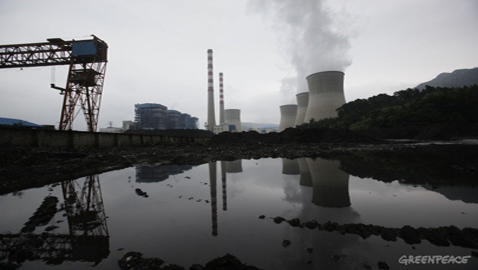
In 2011-12, emission from coal-fired thermal power plants in India resulted in 80,000 to 1,15,000 premature deaths and more than 20 million asthma cases from exposure to air pollution, a report released by the Conservation Action Trust, Urban Emissions and Greenpeace in March 2013 said. The deaths were in addition to a large number of cases of heart attacks, emergency room visits, hospital admissions and lost workdays as a result of coal-based emissions. It is estimated that the monetary cost associated with these health impacts exceeds Rs. 16,000 crore to Rs. 23,000 crore per year.
A new study on the subject now paints an even scarier picture. According to the study titled ‘Coal Kills: Health Impacts of Air Pollution from India’s Coal Power Expansion’ by the Conservation Action Trust and Urban Emissions, the total premature mortality due to emissions from coal-fired thermal power plants in the country is expected to grow two-three times reaching 186,500 to 229,500 annually in 2030. Asthma cases associated with the emissions are expected to reach 42.7 million by 2030.
The study has based its findings about the likely health impacts of planned future coal-fired thermal power plants on several factors. These include the anticipated growth in the total installed capacity under both proposed as well as currently operational coal-fired thermal power plants in the country, the consequent increase in total coal consumption, rise in air emissions and the lack of adequate emission standards for power plants in the country.
As of June 2014, the Indian power sector had an installed capacity of 250 GW. Of this, 148 GW came from coal. There are 111 operational coal-fired thermal power plants in the country.
The study estimates the installed capacity of the coal-fired thermal power plants will reach 159.1 GW at the end of the year with new capacity addition of 300 GW between 2014 and 2030. The largest expansions are likely to take place in the states of Andhra Pradesh, Odisha, Chhattisgarh, Bihar and Jharkhand, all of which have coal reserves. A twofold expansion is expected in the states of Karnataka, Madhya Pradesh, Maharashtra, Punjab, Tamil Nadu and Uttar Pradesh. The total coal consumption will increase two to three times as a result from 660 million tpa to 1,800 million tpa leading to rise in CO2 emissions from 1,590 million tpa to 4,320 million tpa, and doubling of emissions of Particulate Matter, SO2 and NOX. India has no emission standards for either SO2 or NOX even though their emissions have significant health impacts.
The study points out that establishing standards, especially for SO2 and NOX, at par with those observed in USA, EU and China, and mandating the flue gas desulphurization systems like limestone injection during the combustion process, wet FGD using limestone scrubbing, and high efficiency regeneration, can reduce the annual premature mortality by at least 50 per cent every year. It also recommends various other measures including continuous and rigorous monitoring of emissions and ambient concentrations surrounding thermal power plants, using information to enforce emission and pollution control standards and improvement in the environment clearance procedures.












[…] Health impact of coal likely to get worse […]